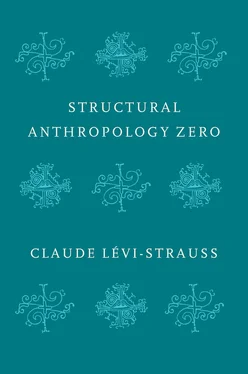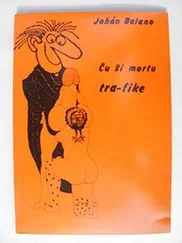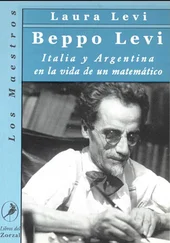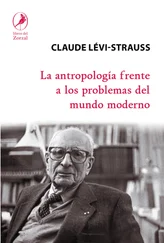Notwithstanding his repeated homages to the country that “very probably saved his life,” and to its universities and libraries, his genuine and profound misgivings about the United States are palpable, which would be confirmed a few years later by his categorical refusal of offers from Talcott Parsons and Clyde Kluckhohn (with vigorous encouragement from Roman Jakobson) of a position at Harvard. “I knew in my bones that I belonged to the Old World, irrevocably.” 12As with the chapters of Tristes Tropiques on Pakistan and Islam – which, although written based on notes from 1950, mention only very fleetingly the massacres and massive population displacements that followed the partition of India – the contemporary reader of “Techniques for Happiness” may also be struck by the silences and blind spots typical of the times and to the position of the observer who, even though called upon to give witness on American society, wonders about the utter estrangement between “generations, sexes and classes” but barely mentions segregation and racial conflict. 13
The present volume is thus intended to make available important yet often lesser known contributions, most of which were originally published in English in various journals, and many of which have become difficult to find. 14In addition to their intrinsic interest, the seventeen articles Lévi-Strauss decided to omit in 1958 represent a kind of prehistory of structural anthropology; they allow us, through a process of cross-checking, to grasp better both the theoretical project and its meaning for Claude Lévi-Strauss, the person, in the mid-1950s.
But there’s more. For the present volume is not made simply of residues, of “odds and ends,” as Lévi-Strauss liked to say in English. Its coherence is not a negative one only. It is, first and foremost, shaped by a place and a time: New York in the years 1941 to 1947. The articles collected here were all written by Lévi-Strauss during his American, and we could even say New York, period, first as a Jewish refugee – a scholar in exile, saved by the rescue plan for European academics of the Rockefeller Foundation – and then as the cultural attaché of the French embassy. They were published between 1942 and 1949 – i.e. before The Elementary Structures of Kinship , whose publication marks a felicitous chronological milestone: it dates (superficially but conveniently) the beginning of structuralism, as well as for Lévi-Strauss himself the moment of definitive return to France and national reintegration through the dissertation ritual and the obtention of a research position at the French national research center (CNRS), even if, in both his personal and professional life, the late 1940s and early 1950s were a troubled period.
These seventeen articles thus reflect a biographical and historical turning point. They reveal the young anthropologist honing his skills and finding his way in American anthropology – a discipline that was older and more established than in France – as a South America specialist, and more specifically of the “lowlands,” thus called to distinguish the region from the great Andean civilizations that had garnered most of the attention of researchers on South America until the 1930s. This volume includes five ethnographic articles, three of which are drawn from the major six-volume work Handbook of South American Indians , edited by Julian H. Steward (a publication that, as recently as 2001, and despite its shortcomings, Lévi-Strauss did not consider to have been made obsolete by more recent work). 15These articles provide an ample rejoinder to the reproach, often made of Lévi-Strauss, that the philosopher by training had a “theoretical bias” and that his approach to native peoples was overly abstract and lacked empirical grounding.
In these articles of the 1940s, Lévi-Strauss appears, on the contrary, as a meticulous ethnographer, not at all a theoretician. Coming from philosophy, via sociology, he now wrote as an expert on the tribes of the Brazilian plateau, at a time when the discipline was focused mostly on questions of tribal identification, of mapping territory and describing practices, from a diffusionist perspective, or at least a perspective informed by the history of South American migration and settlement. Indeed, Lévi-Strauss appears very much as a typical anthropologist of his time: he has read all of the existing literature, but his fieldwork experience is limited (a few weeks with the Bororo and the Nambikwara, later recounted in Tristes Tropiques ). Yet the tributes he paid to Bronisław Malinowski, and even more so to Curt Nimuendajú ( chapters Iand V) – both accomplished fieldworkers on whom he lavished praise – show that he laid great store by prolonged ethnographic work. Indeed, he sensed that such stays – long, solitary periods of “immersion” in the society under study – would become the norm in the discipline, rightly announcing that, “in the future, anthropological works will probably be classified as ‘pre-Malinowskian’ or ‘post-Malinowskian,’ according to the degree to which the author shall have committed himself personally” (p. 64). It remains the case, however, that Lévi-Strauss himself (who, by his own admission, considered himself to be “a library man, not a fieldworker”) 16earned his stripes as an ethnographer through a different and older model of fieldwork – i.e. group expeditions, focused primarily on information gathering, that spent only a few days with the populations – that is reflected in his contributions to the Handbook , which all conform to the same model. In these texts, as well as in his first article of 1936 on the Bororo Indians (which had drawn Robert Lowie’s attention and led indirectly to his participation in the Rockefeller Foundation rescue operation), the intention is first and foremost descriptive, even when first-hand; it focuses on empirical data (material culture, technologies, life stages), and only very brief reflections on social organization or religious or magical forms. The articles’ value lies in the informed distillations they offer of intermittent and heterogeneous sources, often separated by decades, if not centuries.
There is also a strong dimension of initiation in this work for the young French anthropologist, joining a group project in the discipline at a time when taking ethnographic censuses and inventories remained the chief concern of American anthropology, with a prevailing sense of urgency concerning populations threatened by demographic and cultural collapse. Julian H. Steward himself conceived of the Handbook as a form of applied anthropology designed to integrate traditional native communities into the new nation-states of the continent. These texts show the degree to which he had assimilated the dominant issues of American anthropology at the time; for that reason, the terminology is sometimes obsolete, especially in the use of the then common notion of “cultural level” and “level of culture,” which referred to the degree of complexity of social organization and to the more or less rudimentary character of the material culture under study. Lévi-Strauss would later abandon these kinds of formulations because of the evolutionist connotations they retained, even among American anthropologists keen to steer clear of any evolutionism.
This experience of integration into a foreign disciplinary project had the effect above all of leading Lévi-Strauss – erstwhile professor of sociology at the University of São Paulo, sent to Brazil by the Durkheimian Célestin Bouglé – to take stock of the theoretical tradition from whence he came. Many of the articles in the present volume thus try to situate the French social science tradition, and to determine its particularity, in relation to other national traditions. There is no better example of this than the rigorous literature review “French Sociology” ( chapter I), written at the request of Georges Gurvitch for a book that was first published in English under the title Twentieth Century Sociology . In this extended study, dedicated to Marcel Mauss, Lévi-Strauss presents the major lights of the discipline, as well as a few figures outside the mainstream, before proceeding to a detailed discussion of Durkheim’s work, astutely demonstrating the ways in which it constantly vacillates between a “historical perspective” and a “functional perspective,” between the search for primary facts devoid of explanatory value and a social theory that sets ends for itself but cuts itself off from empirical observation. This wavering, as Lévi-Strauss goes on to explain, is based on an implicit assumption of discontinuity between “the psychological and sociological perspectives,” between the analysis of representations and that of institutions. It was to be Mauss’s undertaking to resolve this dilemma by making symbolic activity not the result but a condition of social life, thus restoring continuity between individual consciousness, group representations and social organization. Lévi-Strauss then delves into his core argument – i.e. a response to the critique levelled at French sociology by the great American anthropologist Alfred Kroeber, who accused it of lacking methodological rigor and of being overly abstract and insufficiently attuned to the concrete realities of fieldwork. This recurring accusation on the part of American anthropologists since the 1920s and continuing to the present day – indeed, Lévi-Strauss himself would become one of its chief targets – clearly exercised the young anthropologist who was about to take up a diplomatic posting and to play a more active role in the “cultural influence” of a country that had not yet fully emerged from war (he was writing in late 1944 or very early 1945). Lévi-Strauss first concedes to Kroeber that the “philosophical ancestry” of the Année Sociologique group led its members to neglect fieldwork, but only so as better to point out that the resulting deficiency was about to be remedied: “The next generation of French sociologists, who reached maturity around 1930, has, over the last fifteen years, almost entirely – but no doubt temporarily – given up theoretical work in order to make up for this shortcoming” (p. 50). In support of this claim, he cites the recent ethnographic work of Marcel Griaule, Michel Leiris, Jacques Soustelle, Alfred Métraux, Roger Bastide, Georges Devereux and Denise Paulme, as well as his own.
Читать дальше












